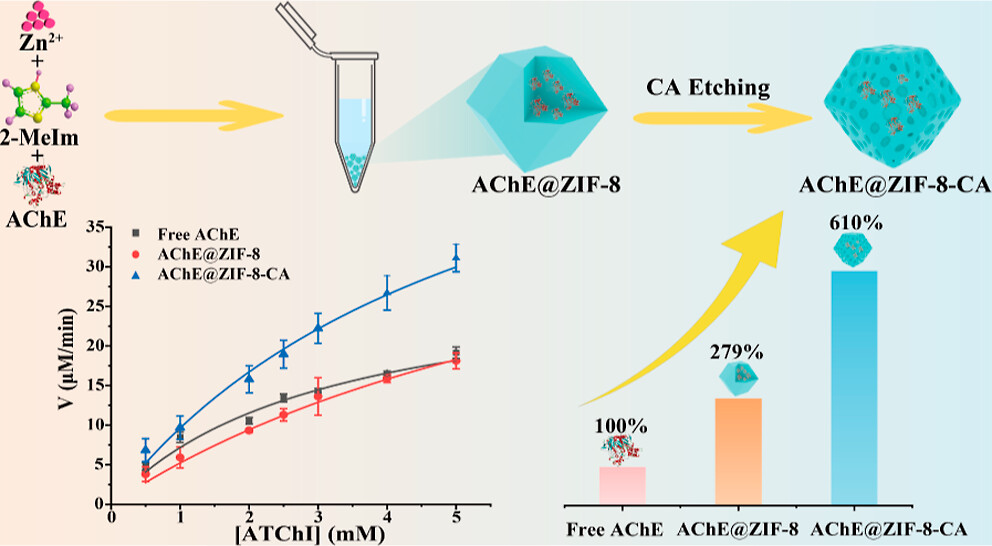Abstract
Enhancing the structural stability of an enzyme and maintaining its catalytic activity are effective ways to improve enzyme utilization and reduce the cost of drug screening. However, immobilized enzyme activity tends to decrease in existing immobilization techniques due to conformational changes and microenvironmental restrictions. In this paper, we present a facile approach to prepare immobilized acetylcholinesterase (AChE) with high activity by a ZIF-8 in situ immobilization and citric acid (CA) etching strategy. CA breaks the coordination bond of ZIF-8 and produces defects, expanding the pore space, improving substrate accessibility, and fully exposing the active site of the enzyme. The enhancement of the catalytic activity of AChE@ZIF-8-CA was about 6.10-fold compared with the free enzyme. In addition, AChE@ZIF-8-CA exhibited an excellent encapsulation efficiency and good tolerance to temperature, pH, and organic solvents. The relative activity remains at the initial 83.77% even in five repeated experiments. The strategy provides a novel and efficient way to quickly construct highly active immobilized enzymes under mild conditions.

Keywords Plus:METAL-ORGANIC FRAMEWORKS,SECONDARY STRUCTURE,ALZHEIMERS-DISEASE,PERIPHERAL SITE,ENZYME,NANOPARTICLES,INHIBITORS,BINDS,ASSAY
Published in LANGMUIR,Volume40;10.1021/acs.langmuir.4c02852,OCT 16 2024


